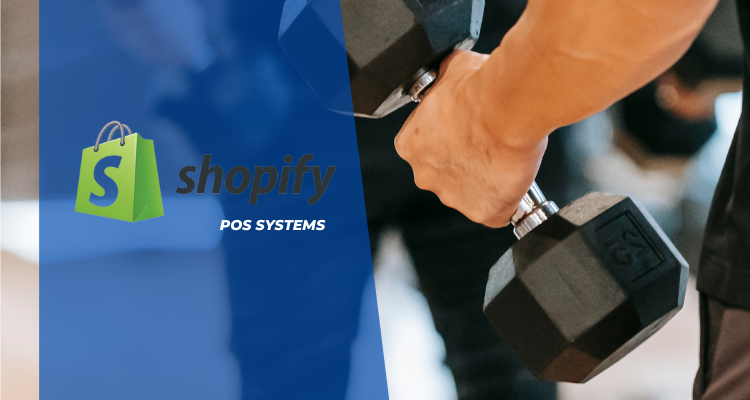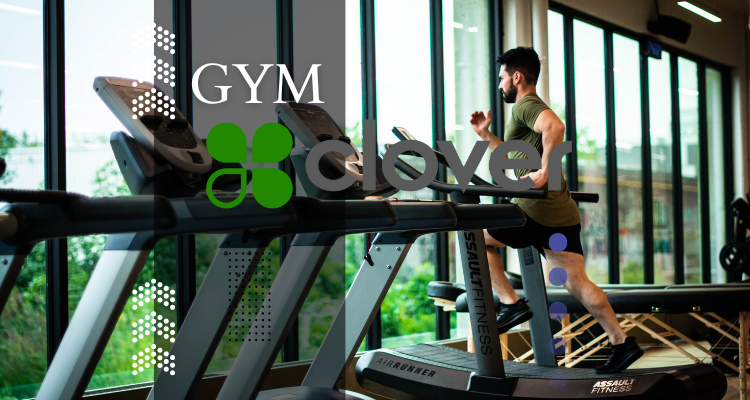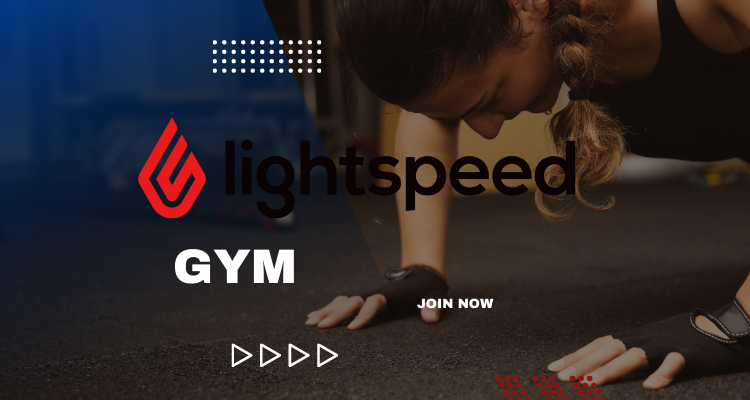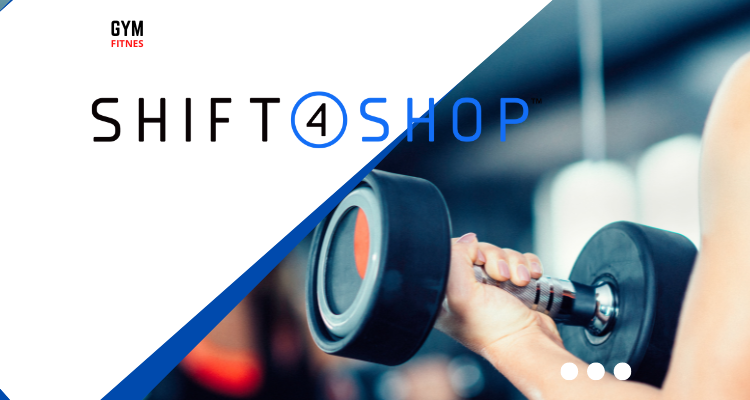Top 5 POS for Gyms to Maximize Profitability.
Welcome to the world of gym management! In this article, we’ll explore the top 5 POS solutions to maximize profitability for your gym
Key Takeaways
- Shopify POS: Best for seamless online-offline integration.
- Square POS: Best for affordability and ease of use.
- Clover POS: Best for hardware versatility.
- Lightspeed POS: Best for comprehensive inventory management.
- Shift4: Best for growing businesses.
Why Do Gyms Need a POS System?

Here are the key reasons why gyms should invest in a POS system:
- Simplified Membership Management: A gym POS system allows you to manage memberships and track member information efficiently. It enables you to easily sign up new members, process payments, and track attendance.
- Efficient Payment Processing: Quick and secure payment processing, including credit card and mobile payments, for membership fees and services.
- Inventory and Retail Management: POS systems track inventory, generate purchase orders, and monitor sales. Accurate inventory data prevent overstocking or running out of popular items. A POS system can also streamline retail transactions at the front desk or online.
- Class and Appointment Scheduling: Manage schedules, book appointments, and track attendance for classes and sessions.
- Reporting and Analytics: Generate reports on sales, revenue, attendance, and member retention to make informed business decisions.
- Integration with other Systems: Modern gym POS systems link with CRM, marketing, and accounting software. This connection automates data entry and record keeping. It improves efficiency and streamlines gym operations.
Shopify POS
When it comes to maximizing profitability for gyms, Shopify is one of the top five POS systems for gyms to maximize profits. Gym owners can streamline operations, manage inventory, offer smooth online bookings, and use strong marketing tools with Shopify’s all-in-one platform, increasing profitability and customer satisfaction.

Pricing
Shopify POS offers the free version on four Shopify plans, which cost $39–$399 per month. However you can save 25% of the money by signing up for an annual plan.
Key features
- Online store setup: Create and customize an online store with a user-friendly interface.
- Accounting Software Integration: Integrate your Shopify POS with accounting programs like Xero and QuickBooks.
- Custom Payment Options: Generate custom payment options, accept partial payments, or accept deposits.
- Analytics and reporting: Gain insights into sales, customer behavior, and other key metrics.
- Multiple Sales Channels: Through Shopify, your website, or other online marketplaces like Facebook, Instagram, eBay, and Amazon, you may sell products online.
Pros and Cons
| Pros | Cons |
|---|---|
|
|
Who is it for?
Shopify’s POS systems can be highly advantageous for various sizes and types of gyms. Here’s a detailed breakdown of the type and size of gym businesses that can benefit from utilizing Shopify POS systems:
- Boutique Gyms and Studios: Boutique gyms and specialized fitness studios can streamline in-person sales, manage inventory, and synchronize data with their online store using Shopify POS systems.
- Multi-Location Gyms or Chains: Gym businesses operating across multiple locations or part of a chain can benefit from Shopify’s multi-location capabilities for centralized sales, inventory, and customer data management.
- Fitness Centers with Retail Merchandise: Gyms offering retail merchandise, such as branded apparel and fitness accessories, can efficiently sell products, track inventory, and integrate sales data with their online store using Shopify POS.
- Hybrid Gym and Retail Spaces: Gyms with dedicated retail areas can seamlessly integrate in-person sales and manage both aspects efficiently using Shopify POS systems.
- Medium to Large-sized Gyms: Shopify POS is scalable and suitable for medium to large-sized gyms with higher transaction volumes, offering features like customizable product options, staff management, and reporting analytics.
- Gyms with Membership or Subscription Models: Gyms operating on a membership or subscription model can integrate Shopify POS with their existing systems to streamline member check-ins and billing processes.
Square
With its seamless integration of payment processing, appointment scheduling, and inventory management, Square empowers gym owners to effortlessly streamline operations and provide a frictionless experience for their members. Say goodbye to complex systems and hello to a simpler, more efficient way to run your gym. Square’s affordability and accessibility make it a popular choice for small gyms.

Pricing
Square for Retail can cost $0 - $60/month, depending on your demand. Meanwhile, you need to pay $0-$69/month to use Square Appointments. However, keep in mind that the more expensive the plan is, the more advanced features it has.
Also, Square charges transaction fees for processing payments (2.6% + 10¢ per transaction for in-person transactions). This rate applies to merchants based in the United States.
Key features
- Payment Processing: Square lets businesses accept credit, debit, and smartphone payments. For memberships, classes, and other services, gyms need this capability.
- Appointment and Class Scheduling: Gym owners can efficiently manage appointments and class bookings with Square’s scheduling tool. It simplifies booking personal training sessions, group fitness classes, and other activities.
- Inventory Management: Square’s inventory management solution helps gym operators track merchandise, equipment, and consumables. For better inventory control, it monitors stock levels, automates reordering, and generates reports.
- Customer Management: Square’s CRM system tracks customer profiles and purchases. This lets gym operators customize services, run promotions, and track consumer patterns.
- Reporting and Analytics: Square’s robust reporting and analytics tools help gym owners understand sales, revenue, customer behavior, and other vital factors. Business choices and improvement are aided by this data.
Pros and Cons
| Pros | Cons |
|---|---|
|
|
Who is it for?
- Small-to-Medium Gyms: Square POS is ideal for small or medium-sized gyms with few employees. It has a simple interface and intuitive functions for organizations without technological skills.
- Large-scale Gyms and Fitness Centers: Larger fitness establishments can use Square POS also. It manages several branches from a central dashboard. This function is helpful if you own a gym chain or plan to grow.
Clover
Clover has an easy-to-use interface, smooth connection with numerous payment processors, and a large app store for customization and scalability. These elements all lead to improved operational efficiency, informed decision-making, and a pleasant overall experience for businesses that use Clover POS systems for gyms.

Pricing
Clover software options begin at $15/month and could cost thousands if you buy a full package.
Key features
- A wide range of payment methods: You can accept cash, checks, invoice/recurring payments, credit/debit cards, and mobile wallets like Apple Pay and Google Pay, PayPal, and Venmo. Also, Clover’s EBT app allows EBT payments. Only the Clover Mini can accept EBT payments because it accepts PINs.
- Inventory Management: Modifiers, variations, and categories are included into Clover’s web dashboard inventory system. You can also conceal items from different sales channels. When you run out of a retail item or restaurant ingredient, Clover will immediately mark it “out of stock.”
- Customer Loyalty Program: You can create a loyalty program based on purchase amount or qualifying items with Clover.
Pros and Cons
| Pros | Cons |
|---|---|
|
|
Who is it for?
- Multi-Location Gyms and Chains: Clover’s scalability makes it ideal for gym chains and multi-location organizations. It allows owners to manage and report across sites.
- Medium-to-Large Gyms: Clover’s membership management, appointment scheduling, and inventory control can assist gyms with a large customer base, several staff members, and complex operations.
- Gyms with Diverse Payment Needs: If your gym accepts credit cards, smartphone payments, and contactless choices, Clover’s flexible payment processing can speed up transactions and improve client convenience.
Lightspeed Retail
Lightspeed Retail’s powerful POS system is the ideal solution for gyms and fitness centers looking to streamline their operations. With its intuitive interface and robust features tailored specifically for gym management, Lightspeed Retail empowers businesses to efficiently handle memberships, class scheduling, inventory management, and sales, all in one comprehensive platform.

Pricing
For one terminal, Lightspeed Retail pricing begins at $89/month ($69/month with annual billing). One license for the POS register software is included with each Lightspeed plan. To add more registers, you must pay an additional $59 per device every month.
All new and current merchants using Lightspeed must use Lightspeed Payments, the company’s in-house payment processor. For in-person transactions, the processor charges a flat cost of 2.6% + $0.10.
Key features
Here are some typical features of Lightspeed Retail that are often used in the gym industry:
- Inventory Management: Lightspeed Retail helps you track and manage your gym’s inventory, including equipment, apparel, supplements, and more. It allows you to set up stock levels, automate reordering, and receive alerts for low stock items.
- Sales and Payments: The system enables you to process sales transactions, accept various payment methods, and handle refunds and exchanges. It integrates with multiple payment processors, making it easy to manage revenue streams.
- Member Management: Lightspeed Retail offers tools for managing member information, including contact details, membership levels, billing, and attendance tracking. This feature can help you streamline your membership processes.
- Reporting and Analytics: The system provides robust reporting capabilities, allowing you to generate insights on sales performance, inventory turnover, popular classes or services, and more. This data can help you make informed business decisions.
- Employee Management: Lightspeed Retail enables you to set up user accounts with different access levels for your staff. It allows you to track individual sales, manage commissions, and monitor employee productivity.
- Integration and Customization: Lightspeed Retail integrates with various third-party applications, such as accounting software, CRM systems, and email marketing tools. It also offers customization options to tailor the system to your gym’s specific needs.
Pros and Cons
| Pros | Cons |
|---|---|
|
|
Who is it for?
- Boutique Fitness Studios: Lightspeed Retail POS is ideal for boutique fitness studios that offer niche classes and routines. Boutique studios need class scheduling, client management, and inventory keeping.
- Medium to Large-Sized Gyms: Gyms with a significant customer base, multiple staff members, and complex operations can benefit from the robust capabilities of Lightspeed Retail POS.
- Health Clubs and Wellness Centers: Health clubs and wellness facilities that offer fitness classes, spa treatments, nutrition counseling, and health product sales benefit from Lightspeed Retail POS. Its integrated platform handles several revenue streams.
- Multi-Location Gyms: Lightspeed Retail POS systems efficiently manage multi-location operations. Lightspeed Retail POS lets you manage operations, inventory, and reporting across all gym locations.
- Entrepreneurs Seeking Customization: Customize Lightspeed Retail POS for your gym’s needs. CRM, accounting, and marketing add-ons and connectors can improve your operations and customer experience.
Shift4
Shift4’s powerful POS system for gyms is revolutionizing the way businesses manage their operations. With seamless integration between online and in-person transactions, inventory management, and robust reporting capabilities, gym owners can now streamline their sales processes and enhance customer experiences effortlessly.

Pricing
The fees are not disclosed and you should contact Shift4 to learn more about how much it will cost to your specific business.
Key features
The following fitness center administration features are built into Shift4:
- Online Store: Shift4 allows gym owners to create and customize their online store with ease. They can showcase their gym’s products, services, and membership options, enabling customers to make purchases online.
- Product Management: Gym owners can easily add, edit, and categorize their products. They can manage inventory levels, track sales, and set up recurring billing for membership subscriptions.
- Membership Management: The platform manages gym subscriptions. Gym owners can provide discounts, membership levels, and recurring payments.
- Reporting and Analytics: Gym owners may analyze their online store’s performance using Shift4’s sophisticated reporting and analytics. Tracking sales, consumer behavior, and website traffic helps businesses make decisions.
- Secure payment processing: Shift4 is highly recognized for its robust security and wide range of payment processing options, making it an ideal choice for businesses that prioritize secure transactions.
Pros and Cons
| Pros | Cons |
|---|---|
|
|
Who is it for?
- Gym Owners with an Online Presence: If you have a gym and want to establish or enhance your online presence by selling products, services, or memberships, Shift4 can be an excellent solution for you.
- Gyms with Limited IT Resources: Gym owners without technological expertise can use Shift4’s simple interface and setup. It doesn’t require coding or IT resources, so you can focus on running your gym.
- Businesses with a Focus on Customer Experience: Shift4 helps gym operators create a smooth and personalized consumer experience. Recurring membership payments, discount coupons, and targeted email campaigns improve client happiness and retention.
- Gyms Looking for Integrated Solutions: Shift4 offers integrated e-commerce and POS systems. Track inventory, manage in-person transactions, and sync data between your gym and online store.
- Fitness Studios and Personal Trainers: Fitness studios and personal trainers who offer specialized lessons, training, or online programs should use Shift4. It lets users simply set up and manage their online store, sell classes and digital products, and offer memberships.
Overall Winner: Which POS system is best for gyms?
When it comes to choosing a POS system for your gym business, Shopify POS emerges as the clear winner. Here is why Shopify POS stands out among the competition:
- Ease of Use: Shopify POS offers a user-friendly interface that is intuitive and easy to navigate. This is crucial for gym businesses, as it ensures smooth and efficient transactions, even during peak hours. Gym staff can quickly learn the system and process payments, making it easier to manage sales and focus on delivering excellent customer service.
- Integration with E-commerce: Any business, including gyms, needs an online presence today. Shopify POS lets gym businesses sell memberships, merchandise, and services online. This interface streamlines inventory, customer data, and operations for in-person and online sales.
- Customization Options: Each gym firm has its own specifications and branding preferences. Shopify POS has several customizable features that let you mold the system to your gym’s preferences and needs. Shopify POS gives you the tools to give your consumers a consistent brand experience by letting them customize their gift cards, loyalty programs, and receipts.
- Flexibility and Scalability: Whether you’re in charge of a big fitness chain or a tiny boutique club, Shopify POS can grow with your company. It is appropriate for enterprises with expansion aspirations because it supports many locations. It also provides a range of hardware choices, such as suitable card readers and receipt printers, so you may pick the configuration that best meets the requirements of your gym.
- App ecosystem: The extensive ecosystem of third-party apps and integrations available through Shopify can increase the POS system’s capability. Shopify POS can be enhanced to better meet the demands of gym businesses by integrating gym-specific apps, such as booking and scheduling tools or fitness monitoring connections.
Note: Gyms have various needs, so what works for one may not work for another. Before choosing a POS system, analyze pricing, features, scalability, and support. Staying up with POS industry advancements might help gym owners find newer options that better suit their needs.
What features should gym owners look for in a gym POS system?
Membership Management
A gym POS system should have robust membership management capabilities. It should allow gym owners to easily track and manage memberships, including:
- Member information
- Membership types
- Expiry dates
- Renewals
This feature simplifies the process of managing member data, making it easier to track and communicate with members, as well as streamline the renewal process.
Integrated Payment Processing
Seamless and secure payment processing is crucial for a gym POS system. It should support various payment methods, such as credit cards, debit cards, mobile payments, and recurring billing for memberships.
Integrated payment processing ensures smooth and efficient transactions, reducing the risk of errors and enhancing the overall customer experience. It also helps with client retention, as members are more likely to continue their membership if the payment process is hassle-free.
Booking and Scheduling
Many gyms offer classes, personal training sessions, or other specialized services. A gym POS system should have a booking and scheduling feature that allows members to easily book classes or sessions.
It should provide a clear overview of the schedule, and available slots, and allow for online or in-person bookings. This streamlines the booking process for members and minimizes the chances of overbooking or scheduling conflicts.
Inventory Management
Gym owners often sell additional products like gym gear, supplements, beverages, or apparel. A gym POS system should have inventory management capabilities to track and manage these items effectively.
It should provide features such as:
- Barcode scanning
- Stock level monitoring
- Reordering alerts
- Sales tracking.
This simplifies inventory management, reduces the chances of stockouts or overstocking, and helps optimize product availability for members.
Reports and Analytics
A comprehensive gym POS system should offer robust reporting and analytics features. It should provide insights into sales data, customer behavior, peak gym times, popular classes, and more.
These reports help gym owners make informed business decisions, such as:
- Adjusting class schedules
- Identifying sales trends
- Understanding member preferences.
Data-driven decisions can lead to improved customer satisfaction and increased revenue.
Behind the Scenes: How We Picked the Best Gym POS Systems
Establish Evaluation Criteria
To determine the best gym POS systems, it is important to establish a comprehensive set of evaluation criteria. Here are some key criteria that a top-notch gym POS system should meet:
- Membership Management: The system should let gym operators simply create and manage membership plans, track member information, and handle membership renewals and cancellations.
- Integrated Payment Processing: A good gym POS system should integrate with several payment processors for secure and convenient member payments. Accepting credit cards, mobile payments, and recurring billing.
- Booking & Scheduling: The system should make booking classes, appointments, and facilities easy. Manage class capacities and avoid overbookings with a simple interface.
- Inventory Management: A gym’s POS system should manage inventory. Stock levels, purchase orders, and sales and inventory turnover reports are tracked.
- Reports and Analytics: A competent gym POS system provides informative reports and analytics on sales performance, member attendance, revenue trends, and other vital parameters. This aids gym owners in data-driven decision-making and improvement.
Identify Potential POS Systems
The process of curating a list of potential POS systems suitable for gym businesses involves several steps:
- Preliminary Research: Conduct initial research to identify popular gym POS systems in the market. Explore their websites, product descriptions, and feature lists to understand their offerings and capabilities.
- User Reviews: Look for user reviews on platforms like Capterra, Software Advice, and Trustpilot. Pay attention to feedback from gym owners or managers who have used these systems. This provides insights into the pros and cons of each system and their suitability for different types of gyms.
- Industry Reputation: Fitness POS systems’ reputations should be considered. Get advice from fitness consultants or associations. These specialists often deal with many gyms and may advise on the best POS solutions.
Final Evaluation and Ranking
Once the initial research and evaluation are complete, it’s time to analyze the collected data and rank each POS system based on its performance in the previously established criteria. Consider the following steps:
- Gather Data: Compile all the relevant information obtained from preliminary research, user reviews, and industry reputation Organize this data in a structured manner for easy comparison.
- Evaluate Each System: Score each POS system using the criteria. Rate each system’s performance. Include simplicity of use, scalability, customer support, and pricing in your review.
- Analyze Results: Analyze the scores and data collected to determine the overall performance of each POS system. Identify the systems that excel across multiple categories and show consistent performance. These systems are likely to be the top contenders for your gym’s needs.
- Shortlisting: Based on the analysis, create a shortlist of the POS systems that performed exceptionally well overall. These are the systems that best meet your gym’s requirements and have the potential to provide the desired functionality and support.





